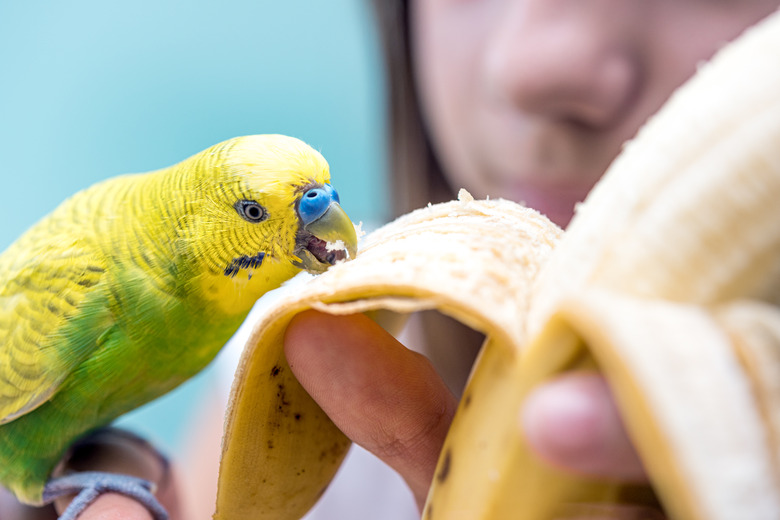How To Determine The Sex Of Your Parakeet
Parakeets are entertaining and intelligent pets who are suitable for even novice bird keepers. When looking at adult birds, it is easy to tell parakeet sex from looking at the face of the bird. However, if you are buying a juvenile bird at a pet shop, you will need to look a little closer.
Look at the cere
Look at the cere
Parakeets have a cere — a fleshy band of skin above the beak surrounding the nostrils. Even baby birds have a cere, and until the parakeet is fully mature, it might be pink, blue, or another color that won't tell you whether a bird is male or female.
By the time a bird is 12 months old, he has reached sexual maturity. Hormones act on the skin pigment to turn it a color associated with the bird's gender. Male ceres turn blue. Estrogen causes a female's cere to become brownish in tone. If your female budgie had a blue cere as a baby, the brown influence of the estrogen might cause it to become a faded brownish-blue or a dull grayish-green.
However, in regularly patterned blue- or green-striped budgies, a cere that becomes more vivid blue in color belongs to a male. A cere that fades and becomes a muted shade of tan is that of a female.
Exceptions to the cere rule
Exceptions to the cere rule
Birds without the distinct striping patterns common to parakeets don't necessarily follow the cere rule. Changing hormones in an older bird's life can also affect cere coloration.
Lutino parakeets are a greenish-yellow color without the telltale striping on the head and wings. They have lighter yellow on the wings and ruby-colored eyes instead of the dark or amber eyes of typical parakeets. Their legs are usually pink also, and ceres are multicolored. Lutino females are likely to have a blue, white, or tan cere, and a male's cere is usually pink or purple. Most but not all lutino budgies are female.
Albino parakeets are all white with red eyes and pink legs. Whether male or female, their cere will be pink or tan. Older parakeets with hormonal drops will also be exceptions to the blue-for-boys and tan-for-girls rule. A male's cere might also turn brown due to estrogen-producing testicular cancer.
Sexing juveniles by cere
Sexing juveniles by cere
Birds who have not yet reached sexual maturity don't follow the sexing rule for cere color. When you visit a pet store to pick out your new budgies, you might want a male and a female, but you can't trust the cere color until the birds are 1 year old.
Young parakeets are usually born with a pinkish cere. Females might have a light blue cere when they're young, and males could have pink, purple, or brownish tones. A female's cere will never turn dark blue, however; it will always be a light, faded blue. Even at a young age, a male's cere will be a darker tone of any given color than a female's.
Look for whitish rings around the nostrils of an immature bird. Female parakeets typically have faint telltale rings around their nostrils. A bird with white rings around the nostrils is always female. However, the absence of those rings could mean the bird could still be of either gender, as not all females have pronounced white rings.
More about determining parakeet sex
More about determining parakeet sex
If you're not sure about your mature bird's cere color, there are other ways to tell parakeet sex. Mature males are typically larger than females, with a large and more square head. Females have a smaller build and a less prominent dome-shaped head.
Leg color of mature birds with the typical parakeet markings is another way to tell. Girls will have pink or tan legs while boys have blue. Only female parakeets lay eggs; however, some females with health issues won't. Females also won't lay eggs if they're too young or too old.
If you're still not 100 percent certain, you can have a feather DNA test. The test involves plucking feathers from the bird's chest and sending them to a lab. Doing this in cooperation with your veterinarian is the best way to ensure you get the correct type and number of feathers as well as to make sure your parakeet doesn't resent you for plucking him.
References
- Pet Informed: Veterinary Advice Online – Sexing Parakeets (Budgerigar or Budgie Sexing)
- Budgie Central: What Is a Lutino Budgie?
- Vet Explains Pets: What's the Difference Between an Albino Parakeet (Budgie) and a Lutino Budgie?
- Budgie Bubble: How to Tell the Difference Between a Male and Female Budgie
